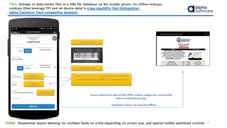The oil and gas industry faces plenty of tough challenges these days, including boom-and-bust cycles, having to play tremendous costs in capital expenses and a major downturn in the oil and gas markets. But those aren’t industry’s biggest challenge. Instead, it’s a labor shortage that shows no signs of letting up.
 So concludes a study by Accenture: “The Talent Well Has Run Dry.” In this blog post, I’ll summarize the report’s findings and let you know how you can solve the problem for your company.
So concludes a study by Accenture: “The Talent Well Has Run Dry.” In this blog post, I’ll summarize the report’s findings and let you know how you can solve the problem for your company.
The numbers the report cites are stark: Since 2014, the industry has shed 440,000 jobs thanks to layoffs and job cuts. And that isn’t even the whole story. Many tens of thousands of more people have retired, making the labor shortage even worse, the study says.
Particularly problematic are the retirements of highly trained professionals, including geoscientists and engineers with a variety of skills, including for drilling, production and maintenance. By 2025, the report concludes, the industry will face a shortage of up to 40,000 of these vital employees.
The report warns, “The challenge posed by this talent shortfall is significant…We believe the growing workforce deficit will, in fact, be a greater barrier to oil and gas companies’ upturn success than any deficits that might exist in capital, equipment or supplies.”
Beyond that are the new skillsets the industry requires, including data scientists and reservoir engineers who need big-data expertise. The oil and gas industry will have to compete with other industries for people with those skills, which will be extremely difficult.
The study recommends a variety of ways in which the industry can bridge the talent gap. One of the top ones is to “use digital to attract and develop talent.” The report notes, “New technologies can play an essential role in attracting and developing digitally curious talent. Digital platforms, cloud-based collaboration tools, and peer-developed training that is delivered via streaming video can create more engaging, satisfying work environments and accelerate workforce productivity.”
It also recommends that the industry “work smarter” by integrating digital technologies into every aspect of the business. It notes, “Digital must be an integral component of new operating models and talent strategies. Digitally enabled asset inspections, subsurface analyses and self-diagnosing/healing wells will transform exploration and production.” Digital and mobile technologies will also help the industry do more with fewer people.
It also recommends to “make ‘agility’ your North Star.” Companies need to adapt and act quickly if they want to stay alive. It says, “To achieve the agility that is required, talent strategies must be designed to fully leverage the extended workforce, including employees, contractors and service companies.” Doing all that requires digital technology, notable mobile to tie everyone together.
What’s the Best Oil & Gas Industry Software for Bridging the Talent Gap?
To work smarter, attract new talent, and become more agile, the oil and gas industry needs a great development platform. Alpha TransForm is ideally suited for the task. It has the unique ability to rapidly create mobile-optimized forms and field apps that can easily access and integrate with existing databases and web services and can exploit built-in role-based security. It builds offline apps, vital for the oil and gas industry, and has frequently been used to write mobile apps for field workers.
Additional Reading:
Read about how to improve efficiency and increase production with digital oil fields.
Find out why digital transformation is the cure for what ails oil and gas field services.
See how mobile apps can help rejuvenate the oil and gas industry.
Understand why oil and gas CIOs need to embrace digital transformation.
Find out five reasons why mobile apps are the oil and gas industry’s secret weapon.
Learn how Alpha Software is helping oil and gas customers or try Alpha TransForm yourself.
View and download Alpha Software's pumpjack inspection app and watch a related webinar on how to customize it for your organization.
Read a case study on how one developer for a major oil drilling company built an offline-capable maintenance app for offshore oil platforms.






Comment